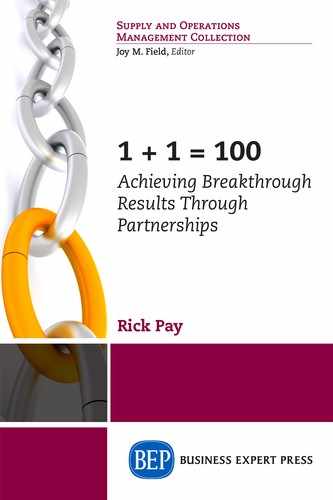My first view of a “partner” was watching an old black-and-white television and the great western shows of the age. The Lone Ranger had Tonto. Roy Rogers and Dale Evans were partners. Gabby Hayes seemed like a perpetual candidate for whoever needed a partner at the moment. They pronounced it “pardna.”
There were nonhuman partners. Rusty and Rin Tin Tin. Lassie and Timmie. Asta was the buddy of Nick Charles (The Thin Man). Pad Brady appeared in Roy Rogers’s movies with his partner—a jeep called “ Nellybelle.” More recently, Star Wars has provided C-3PO and R2-D2 from the outset.
We hear of “partners in crime” both in fact and colloquially. “Life partner” has entered the lexicon to indicate two people living as a committed couple. We hear of “limited partners,” “full partners,” and “minority partners.” A consulting or law firm can have scores of partners, but the key is to be a “named partner,” with your name on the door and letterhead. These can be ephemeral. Merrill Lynch Pierce Fenner and Smith eroded to Merrill Lynch, and today they have been subsumed by the Bank of America.
Traditionally, we’ve viewed “partners” as people involved in business operations on large or small scales who share investment, risk, and profit. We partnered as kids running the never-successful lemonade stands. We’ve partnered as adults, many of us, in business and investments.
Most recently, partnering has become a strategy with suppliers and customers for successful business. This may include supply chain, sales, finance, R&D, manufacturing, and almost any other aspect of the operations. This can be brilliant (doctors and pharma collaborating on the most efficacious treatments) or calamity (Mercedes “merging” with Chrysler and almost destroying it in the process).
Rick Pay has seen this process in all its dimensions from both sides of the desk. He shows the distinctions between a Wal-Mart putting pressure on suppliers to reduce costs for the sake of its own profit and Supra taking great strides to make itself and its partners mutually successful.
What’s happening in your business, whether it’s closely held, a division of Fortune 500, a nonprofit, a government agency, or an educational institution? Are you partnering or are you in a zero-sum game where someone has to lose in order for you to win? Rick shows you in the pages that follow how to create a whole that is exponentially greater than the sum of the parts.
So, read on to determine how to leverage your business. Learn how to create alliances and not barriers. I think Rick’s approaches are essential to your success. And it probably also wouldn’t hurt to get a dog.
Alan Weiss, PhD
Author, Million Dollar Consulting: The Professional’s Guide to Growing
A Practice, Million Dollar Maverick: Forge Your Own Path to Think
Differently, Act Decisively, and Succeed Quickly, and over 60 other books
